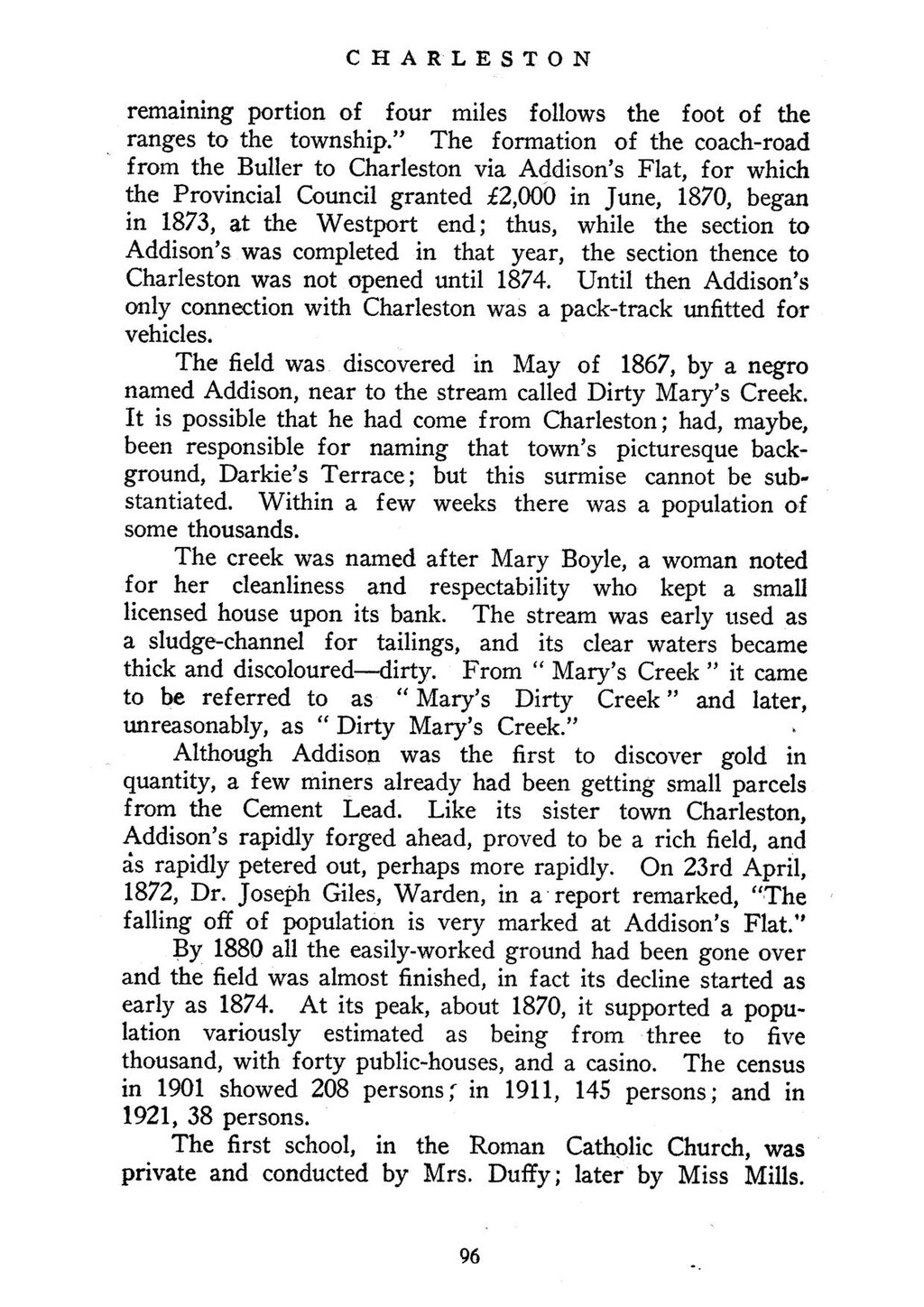CHARLESTON
remaining portion of four miles follows the foot of the ranges to the township.” The formation of the coach-road from the Buller to Charleston via Addison’s Flat, for which the Provincial Council granted £2,000 in June, 1870, began in 1873, at the Westport end; thus, while the section to Addison’s was completed in that year, the section thence to Charleston was not opened until 1874. Until then Addison’s only connection with Charleston was a pack-track unfitted for vehicles.
The field was discovered in May of 1867, by a negro named Addison, near to the stream called Dirty Mary’s Creek. It is possible that he had come from Charleston; had, maybe, been responsible for naming that town’s picturesque background, Darkie’s Terrace; but this surmise cannot be substantiated. Within a few weeks there was a population of some thousands.
The creek was named after Mary Boyle, a woman noted for her cleanliness and respectability who kept a small licensed house upon its bank. The stream was early used as a sludge-channel for tailings, and its clear waters became thick and discoloured—dirty. From “Mary’s Creek” it came to be referred to as “Mary’s Dirty Creek” and later, unreasonably, as “Dirty Mary’s Creek.”
Although Addison was the first to discover gold in quantity, a few miners already had been getting small parcels from the Cement Lead. Like its sister town Charleston, Addison’s rapidly forged ahead, proved to be a rich field, and as rapidly petered out, perhaps more rapidly. On 23rd April, 1872, Dr. Joseph Giles, Warden, in a report remarked, “The falling off of population is very marked at Addison’s Flat.”
By 1880 all the easily-worked ground had been gone over and the field was almost finished, in fact its decline started as early as 1874. At its peak, about 1870, it supported a population variously estimated as being from three to five thousand, with forty public-houses, and a casino. The census in 1901 showed 208 persons; in 1911, 145 persons; and in 1921, 38 persons.
The first school, in the Roman Catholic Church, was private and conducted by Mrs. Duffy; later by Miss Mills.
96
